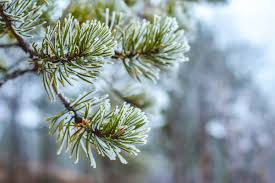Leaf Me Alone
- Cynthia He

- Jun 16, 2019
- 3 min read
Updated: Jun 17, 2019
By Cynthia He, Botany
Have you ever considered that every time you eat a vegetable or fruit, you're eating a plant organ? Even plant leaves, a staple of our diet, counts as one.
Parts of a Leaf
Though not all leaves look like the one depicted to the left, it can be used as a general diagram. The midrib is a continuous vein the spans the base to the tip of the leaf. Branching off the leaves are veins. Some leaves will have a petiole (with stipules at the base) to connect them to the stem, while others, sessile leaves, are directly connected to the plant stem. The actual leaf blade is called the lamina, and the edges of it are called the margin. Plants can have variations of the structure above, or not have them at all. Some may even have extra leaf appendages, but that all depends on the plant.
Leaf Types
Leaves come in a variety of shapes and sizes that depend on the plant type and location. For plant type, nonflowering vascular plants have leaves that come in three basic types: fronds, microphylls, and needles. Fronds are finely divided leaves on ferns, microphylls are the tiny leaves found on club mosses, and needles are fine leaves that are very thin and packed with chlorophyll. On the other hand, flowering plants have different types of leaves based on the type of flowering type (monocot or dicot, which will be discussed later)

Location is also a big factor in determining leaf shape. For example, plants residing at the bottom of a tropical forest will have very large, broad leaves to maximize the amount of sunlight captured. On the other hand, evergreens have very thin needle like leaves with lots of chlorophyll to reduce water loss (because the leaves have a smaller surface area) and maximize photosynthesis. Each leaf has a certain name, all of which you can learn here.
Aside from leaf surface areas, leaves also have different formations/patterns. The way the leaves are arranged on the stem is called it's phyllotaxy, typically being alternate, spiralled, whorled, or opposite, with different phyllotaxis having different advantages. Such advantages include maximizing the amount of sunlight caught by each leaf. For example, when leaves are whorled, the leaves are able to collect sunlight from all directions. The patterns are usually regular, and can be demonstrated with mathematics. Each leaf is placed very strategically, not randomly, as wasting leaves is expending energy.
Leaves types can also be classified as compound or simple, depending on how the leaf blade is divided. The tropical forest plant located at the bottom of the forest, mentioned earlier, would have simple leaves. Simple leaves are not divided at all and have the maximum surface area to capture sunlight. Compound leaves are divided and are much smaller, reducing transpiration (the rate at which water evaporates from a plant). Both leaf types have their advantages and disadvantages, and have been adapted to fit the environment of the plant.
Of course, there can be variations of these leaf patterns and leaf types. However, even with the variations, they can be usually labelled as a certain “type”- like a “type” of compound leaf or a “type” of spiral formation.
Plants can begin with a different number of leaves. Flowering plants, for example, can be classified into two main groups, Monocot and Dicot, based on the number of leaves they begin with.
Monocots and Dicots

Monocotyledon and Dicotyledon refer to two types of flowering plants: those that begin with one embryonic leaf seed (or cotyledon), Monocots, and those that start with two cotyledons, Dicots. Their differences stretch beyond their initial leaf growth (If you want to learn more about the differences besides leaves, click here!) , but the easiest way to remember the difference is to remember how many leaves they begin with (it's spelled out in the name!).
Another common difference between the two is the type of venation in the leaves. Monocots will have parallel leaf veins, while Dicots have branched leaf veins. Another type of venation (that is not found in monocots or dicots) is dichotomous, or forked/fanned, venation.
A popular monocot includes corn, while a popular dicot would be beans. They are both great additions to salads. While you may not be thinking about leaves and leaf types when you are enjoying a healthy lunch, it is still fun to recognize the different types of leaves mixed into one bowl.
The next time you eat a leafy vegetable or enjoy a salad mix, challenge yourself and take your time and admire its beautiful intricacies!
_________________________________________________________________________________________
Sources:







Commentaires